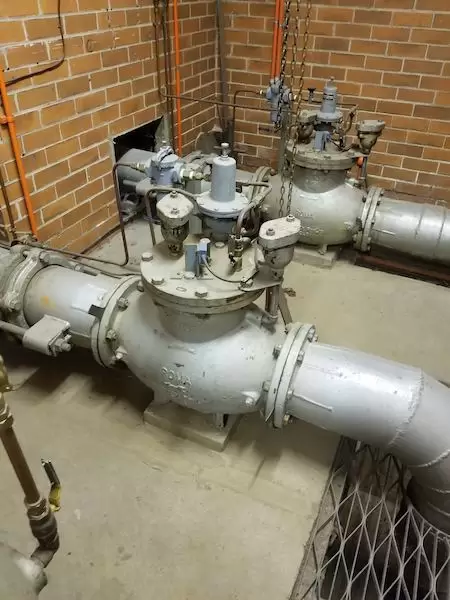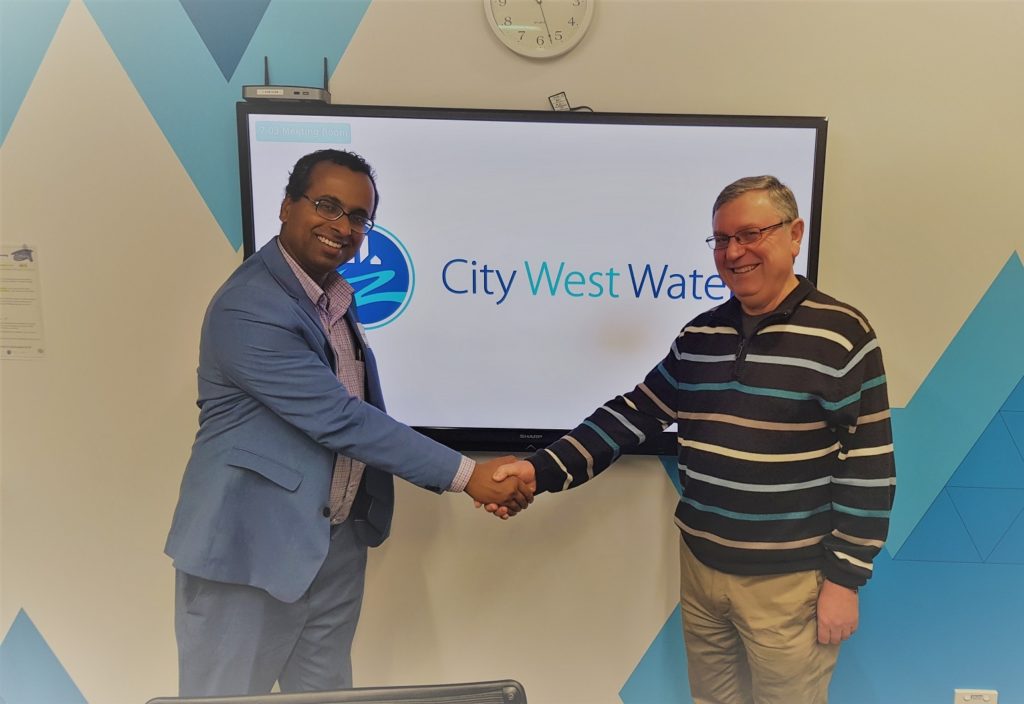Engineers at Victoria University have joined forces with a water retailer to generate clean energy and reduce leaks — by using the excess pressure in pipes to drive hydro turbines.
The pilot project is based at a City West Water (CWW) facility at Keilor Park in Melbourne’s north-western suburbs. It uses the excess pressure that builds up in gravity-fed water pipes between elevated reservoir sources and customers to drive a hydro turbine and generate electricity.
According to Dr Nitin Muttil, who leads the water resources group at Victoria University’s College of Engineering and Science, the pilot plant could generate up to 300 MWh per year — or enough energy to power around 100 homes. He added that this would deliver annual greenhouse gas emission savings of around 300,000 kg.
Muttil said the turbine installation is nearing completion, and expected to be operational early next year. He added that once the turbine was up and running, there would be a number of options for CWW to put the energy to use.
“They could either supply it to the grid for revenue or use it to run their operations,” he explained, adding that in the future it could be stored in batteries for use at other sites or to power other services such as electric car charging stations.
A source of clean energy
Muttil said that the idea for this source of clean energy came about during discussions with CWW, since the water utility is keen to use renewable energy sources, including solar panels and energy from wastewater.
When Muttil’s team investigated whether there was excess energy in the water network that could be harnessed, they found that, in many locations, the pressure was more than required.
Australian standards recommend keeping pressure in pipes below a head of 50 metres (one metre head is about 10 kPa). Pressure in excess of this value could damage appliances, taps and fittings. Excess pressure in pipes also has direct correlation with an increase in pipe leaks and bursts. This leads to an increase in “non-revenue water” — the water that is supplied but does not reach paying customers.
“Once we reduce excess pressure, it reduces bursts and leaks in pipes, which in turn reduces the non-revenue water,” explained Muttil, adding that this could also deliver significant cost savings in maintenance and lost water resources.

Most Australian water agencies install pressure reducing valves (PRVs) to release excess pressure, but Muttil suggested replacing them with hydro turbines to capture the energy which would otherwise be dissipated.
He and his team identified six locations in the CWW network where hydro turbines could convert excess water pressure into energy — without disrupting customers’ supply and also satisfying fire service flow requirements.
“We found that out of the 19 sites analysed, six are financially feasible,” he said.
Keilor Park was selected as the pilot site, as it had the greatest energy recovery potential, where an existing PRV could be replaced with a turbine. If the pilot project is successful, Dr Muttil said that CWW could install hydro turbines at the other sites in the future.
Extraordinary benefits
Chris Arabatzoudis, CWW’s Integrated Water Cycle Management and Liveability Team Leader, worked closely with Muttil’s team to carry out this research and apply it to CWW’s water network.
The renewable energy generated from excess pressure will allow CWW to move a step closer to meeting its emission reduction targets and provide additional revenue for the company through the Australian government’s Large Scale Generation Certificate (LGCs) program.
“The outcome of this research has been extraordinary, not just to CWW, but also to its customers and to the environment,” said Arabatzoudis, adding that the potential to reduce leaks and bursts in the network was also highly beneficial.
Muttil’s research team have worked with CWW on various projects for more than a decade, and its study for the hydro turbine project was shortlisted earlier this year for a 2019 Business/Higher Education Round Table (BHERT) Award for outstanding research and development collaboration.
Muttil said he is also working with CWW to pinpoint the causes of bursts and leaks — which include excess pressure in pipes as well as factors such as the age and material of pipes. Part of this project is to develop AI algorithms to predict possible locations of bursts and leaks. This will allow the water utility to develop AI-based pipe replacement strategies based on the risk factors identified.
With 28 research disciplines ranked at or above world standard in the latest Excellence in Research Australia (ERA) assessments, VU offers world-class research opportunities. Find out more.
